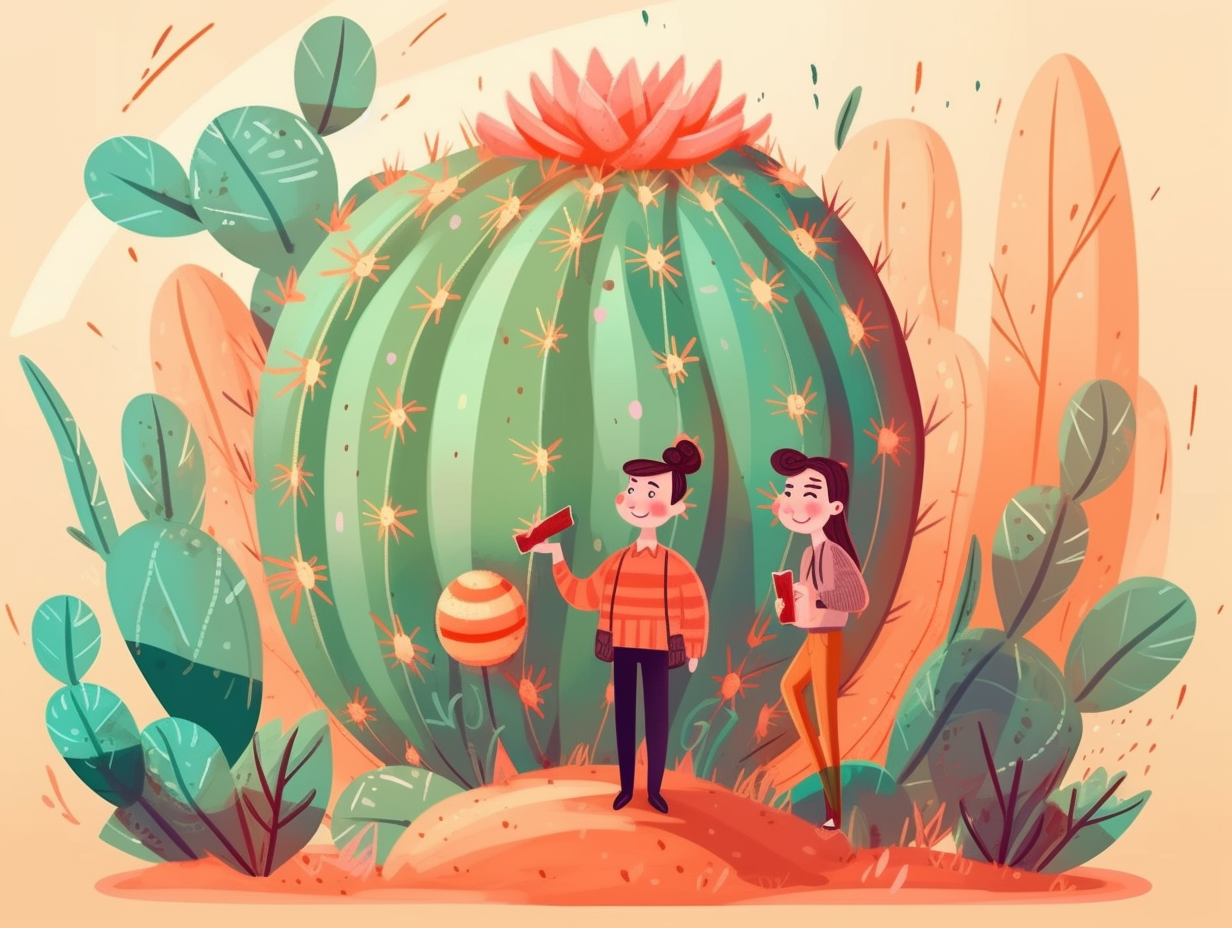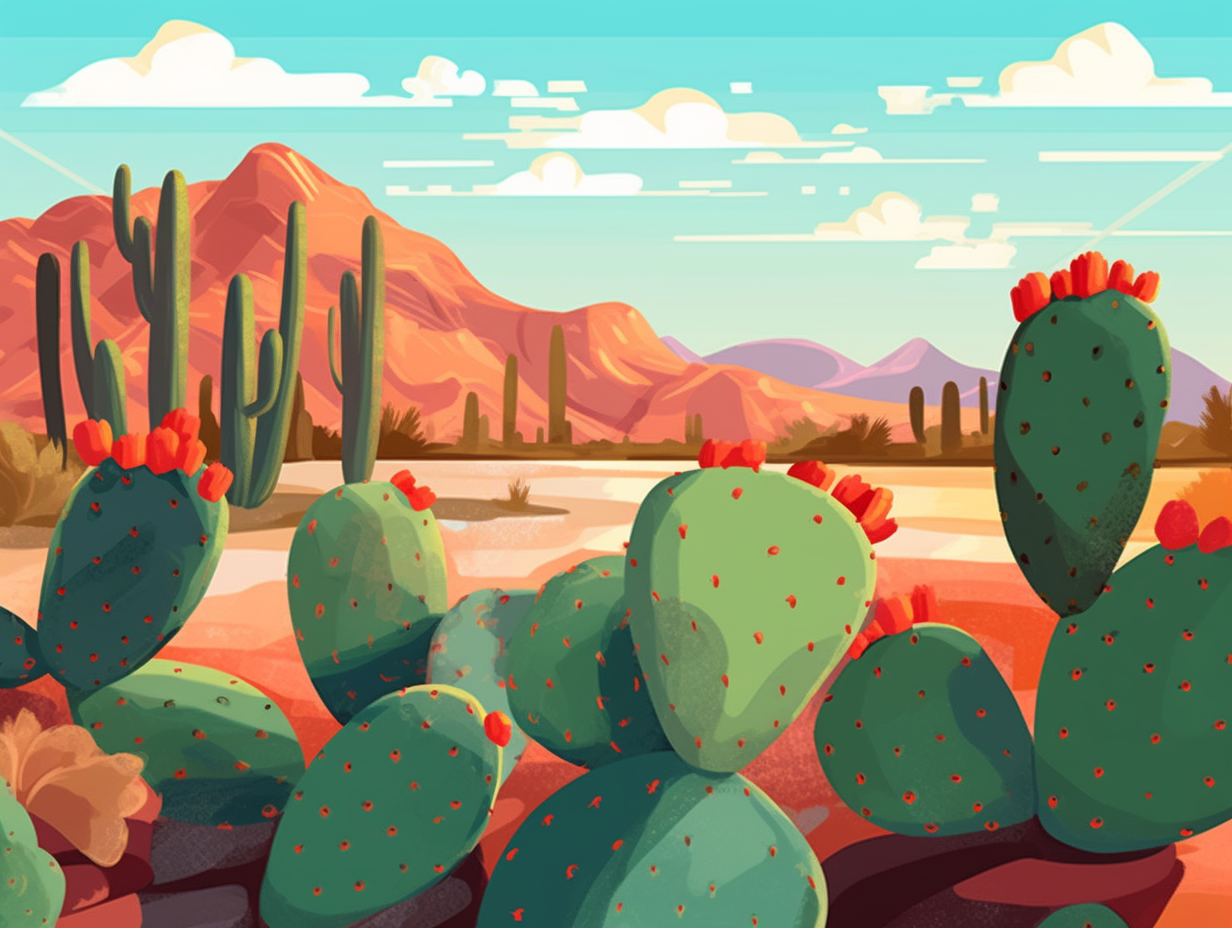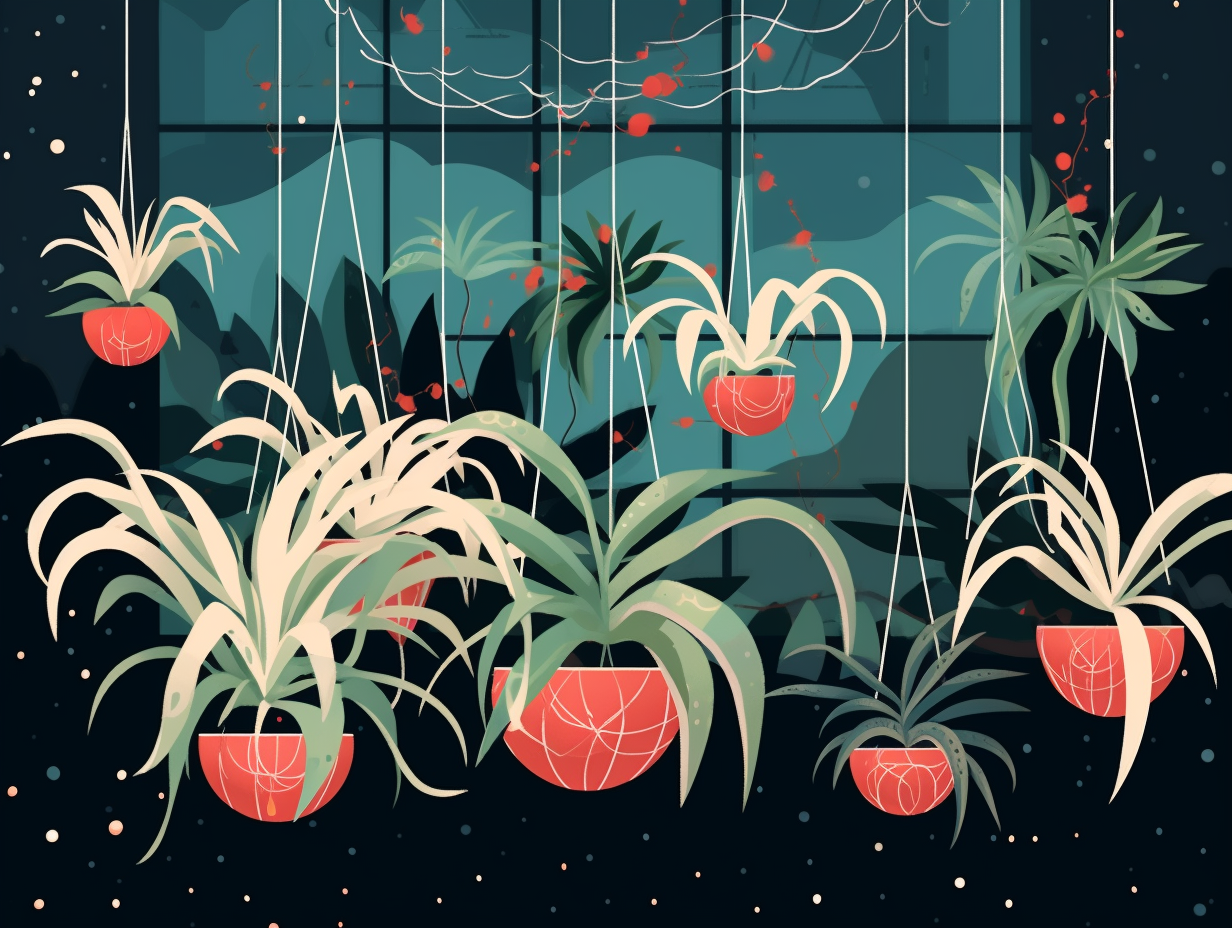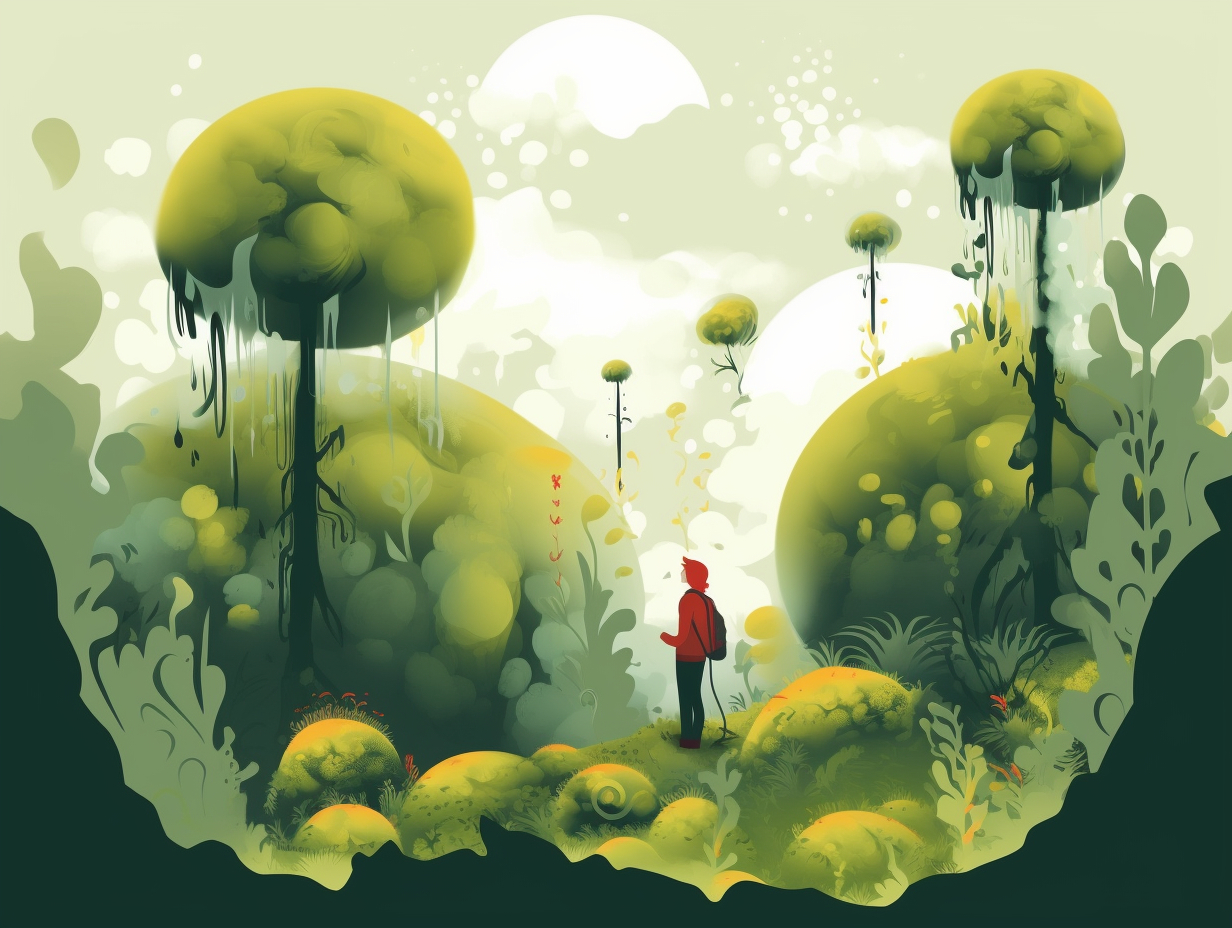Discover the Desert: Top 14 Captivating and Fun Facts About Cactus Plants

1. Cacti vs. Tortoises: Evolution Showdown
It's no tall tale, but rather a tortoise shell: some cactus species on the Galapagos Islands have evolved crafty ways to outgrow and outsmart their main herbivores, saddleback tortoises. One trick up their prickly sleeves is growing into a 40-foot giant with a smooth trunk and hard, flaky bark to avoid the tortoise's sharp jaws, while others ditch the trunk and spines altogether, currying favor from frigate birds for protection and a dash of fertilizer.
Source => nwf.org
2. Rainy Day Water Storage Specialists
When cacti aren't busy playing "the floor is lava" in the desert, they're preparing for their very own version of "water under the bridge": Cacti have evolved to quickly absorb water during rare rainy days and efficiently store it in their stems. Their specialized root system and structures minimize water loss through transpiration, ensuring they stay hydrated during long drought periods.
Source => frontiersin.org

Did you know there's a succulent that can grow up to 15 feet tall? Meet the Aloe Plicatilis, or Fan Aloe, the ultimate plant for adding vertical flair to your collection! 🌿💚
=> Fun Facts about Succulents
3. The Slowpoke Skyscraper Saguaro
Patience is a virtue, especially when you're a slowpoke saguaro on stilts: Despite taking a whole decade to inch past its first birthday, this plodding cactus star can stretch to a skyscraping 45 feet by the time it blows out 200 candles—making it the tallest cactus species in the United States!
Source => nps.gov
4. The Cholla Cactus Flower Fiesta
Prickly on the outside but a party on the inside, cholla cacti are like the surprise dessert at the end of a meal that left you covered in crumbs and stains: They actually flaunt stunning flowers in shades of green to orange, sometimes forming dense "forests" and skyrocketing to heights of 15 feet.
Source => succulentalley.com

5. Prickly Pear: The Cactus Superfood Sheriff
Step aside, kale and quinoa, there's a new sheriff in town, a prickly fellow with a dry sense of humor: The prickly pear cactus is a superfood hero, boasting high levels of vitamin C, calcium, antioxidants, dietary fiber, and potassium in its fruit, while its pads serve up vitamin A, calcium, fiber, and a thirst-quenching 85% water content, not to mention centuries of ancestral medicinal uses under its spiky belt.
Source => extension.unr.edu
6. Bugs, Lipstick, and Technicolor Tacos
What do bugs, lipstick, and taco night have in common? They party together on cacti and create technicolor masterpieces! Behold the cochineal insect and its fabulous color vibes: This buggy artist can be found on cacti in tropical and subtropical regions of the Americas and produces a natural dye called carmine, which has been used by the ancient Aztec and Maya civilizations and is still a popular colorant in modern food and cosmetics. Though synthetic pigments exist, our tiny insect friends continue to thrive as concerns over artificial additives send people groovin' back to nature's colorful dance floor.
Source => en.wikipedia.org
7. Camouflage Cactus Chameleons
If cacti had an acting career, they'd win an Oscar for their brilliant camouflage performances: Some species, like the living stone cactus and mistletoe cactus, masquerade as rocks or leafy clumps to avoid becoming a predator's snack, showcasing their impressive blend-in skills and proving that stealth tactics aren't just for the animal kingdom.
Source => phys.org
8. Night Owls of the Plant Kingdom
While cacti might seem like the ultimate night owls, partying all night and snoozing during the day, they're really just clever water-saving machines: These prickly plants use a unique photosynthetic process called Crassulacean Acid Metabolism (CAM) to open their stomata at night, take in carbon dioxide, and store it as organic acids, utilizing the stored carbon dioxide for photosynthesis during the day when their stomata are closed to conserve water. And cacti aren't alone in this nighttime shindig – bromeliads and orchids have also joined the CAM dance!
Source => sciencedirect.com
9. Cactus: A Prickly Culinary Treat
Who says you can't have your cactus and eat it too? These prickly wonders are not just a sharp addition to your garden collection: Prickly pear cacti serve as a staple food, with their fruit and young nopales eaten fresh or cooked, while the plant itself has medicinal properties, including treating rheumatism and boosting milk production in nursing women. Spines serve as needles and the vibrant juice from the fruit is used as a natural dye.
Source => aihd.ku.edu

10. The 200-Year-Old Thirsty Giant
Picture this: a towering, prickly old-timer who thrives in dry wit and can stand tall without a drink for years – Surprise! We're talking about a cactus, not your eccentric grandpa: The remarkable saguaro cactus can live up to 200 years, grow as tall as a six-story building, and go without water for an astonishing two years in some species.
Source => smithsonianmag.com
11. Give a Cactus a Root, and It'll Take a Mile
Cacti have clearly been taking tips from Spider-Man, spreading their roots far and wide to slurp up every last drop of water in their desert city: Some cactus species, like the Saguaro, have shallow root systems that can sprawl as far as the plant's height, while other cacti species can grow roots reaching impressive depths of 20 feet to quench their thirst!
Source => succulent.care
12. Cactus and Cotton Candy's Fluffy Cousin
Step aside cotton candy, there's a fluffier, pricklier attraction in town: The Snowball Cactus, also known as Mammilloydia candida, sports over one hundred white spines on each bumpy tubercle of its stem, grows up to 12 inches tall, 6 inches wide, and blossoms dainty pale pink and white flowers in the summer months — distinguishing itself as a unique species with special smooth seed characteristics that grant it its very own genus.
Source => mountaincrestgardens.com
13. Saguaro: Slow and Steady Wins the Race
Don't go inch-busting a saguaro cactus on your first date; it'll appreciate a little space as it grows: In its early years, a saguaro can take up to a whopping 8 years to grow just 1-1.5 inches tall! That may sound a cacti-crunching slow, but it's all thanks to the role of a "nurse tree," which guards the saguaro as it shoots up before it can finally stand tall and branch out, which could take another 50-70 years. Yikes!
Source => nps.gov
14. Bat-Tastic Cactus Pollination Party
It's a bat-tastic conundrum of cactus-loving tactics: the cardon cactus, contrary to popular belief, is efficiently pollinated by both the nectar-slurping lesser long-nosed bat and the insect-munching pallid bat. In fact, our pale winged friend outperforms its nectar-addicted relative by delivering about 13 times more pollen per visit, proving that the world of cactus and pollinators is more like a grand masquerade ball than a tightly-knit soiree.
Source => news.ucsc.edu
Related Fun Facts




















